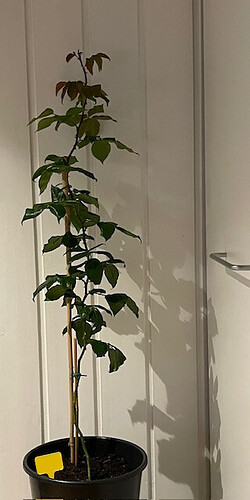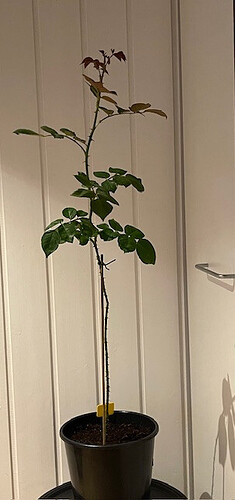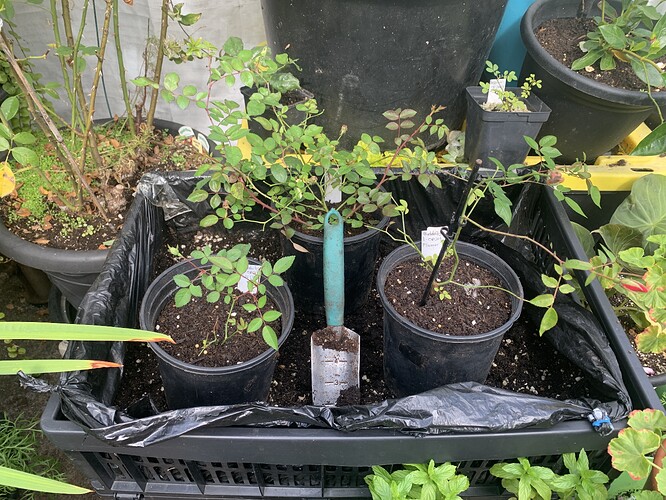If your seed parent is (or your mixed pollen involves) some of these OGRs, that’s not strange. Note that since reblooming is recessive and linked with juvenile blooming, that’s about the genotype from China roses (ksncopia and ksnnull, both KSN gene which inhibits reblooming completely lose function). Other reblooming genotypes, maybe KSNA181, may not linked with juvenile blooming, and may cause some strange results. I have about one dozen of R. moschata (may have KSNA181) x ‘Mutabilis’ (ksncopia / ksnnull) sowed this year. Despite both parents are repeat blooming, only 2 of seedlings show stable juvenile blooming (although much larger than a “typical” one when flowering). Others only occasional bloom, or, for the most, NEVER blooms until now. I also have about 50 R. rugusa OP, their parents are repeat blooming but only a small portion of them bloomed this autumn. So repeat genotype like KSN*A181 is unlikely linked with absence of juvenile period.
Kawamura, K., Ueda, Y., Matsumoto, S., Horibe, T., Otagaki, S., Wang, L., Wang, G., Hibrand-Saint Oyant, L., Foucher, F., Linde, M., & Debener, T. (2022). The identification of the Rosa S -locus provides new insights into the breeding and wild origins of continuous-flowering roses. Horticulture research , 9 , uhac155. identification of the Rosa S-locus provides new insights into the breeding and wild origins of continuous-flowering roses | Horticulture Research | Oxford Academic
The supplementary table of this article lists many KSN genotyping results of roses. Note that many repeat blooming OGRs (and some moderns) are NOT homozygous ksn (to my surprise, Blush Noisette and Gruss an Teplitz). If you use them as parents, it’s possible to get seedlings without juvenile blooming, or even once blooming ones.


